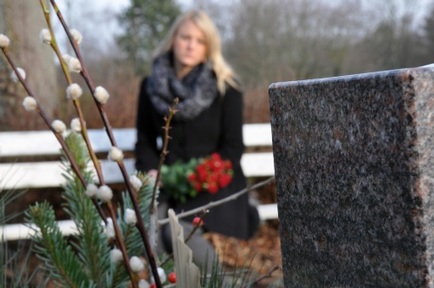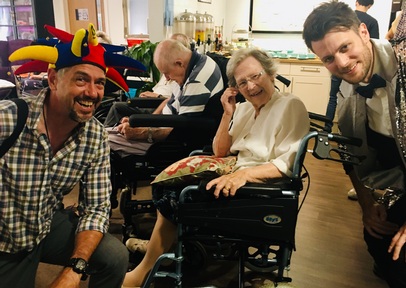Tips on using surveillance cameras in care homes
The issue of CCTV cameras in care homes tends to arouse a plethora of polarised opinion, with families of abuse victims calling for widespread use and others concerned it will infringe people’s human rights.

Last year, the Care Quality Commission pushed it into the media spotlight by deciding to publish guidance on overt and covert surveillance in care homes for both care home providers and the general public.
A number of care home have already gone down the route of installing surveillance cameras. Wensley House in East London took the bold decision to do so as its director Jonathan Beling felt it would be “an extra tool that can be used in delivering care”.
He has installed overt surveillance cameras in the communal areas and in the residents’ bedrooms which they can switch on if they wish to.
However installing surveillance cameras is a very complex process and there are a lot of things that need to be considered and taken into account, he warns.
“When you think about installing CCTV, there are a number of steps you need to take. There is the financial cost to consider. You also have to ensure that you have a locked room where the footage can be stored where people can’t access it. You also have to have a process in place stating in what circumstances you would check the footage. On top of this is the amount of communication you must have with all concerned to ensure everyone is on-board,” says Mr Beling.
Legally it is a minefield
Barrister John Cooper, a visiting professor of law at Cardiff University and a Master of the Bench at Middle Temple, recently spoke at a conference highlighting the complexities, saying: “Legally it is a minefield. It is not sufficient in my opinion to throw onto the provider the responsibilities of determining the Health and Social Care Act. There is an absolute minefield ahead of everyone.”
In the wake of all this, Dr Malcolm Fisk, senior research fellow at the Centre for Technology Enabled Health Research, Coventry University, has issued guidance on using surveillance technologies in care homes.
Dr Fisk hopes his research will “signal an ethical way forward for their use that de-fuses the heightened rhetoric associated with concerns about the abuse”.
The study ‘Surveillance technologies in care homes: seven principles for their use’ states ‘Surveillance technologies have a part in this within care homes, but there are important ethical considerations – notably around the way in which concerns for privacy are balanced with those about people’s safety and autonomy’.
He plans to add more research to the seven principles through further work with care home residents, family carers, formal care providers and others.
The paper argues that the use of surveillance technologies, including cameras, in certain locations within care homes is legitimate and ethically defensible.
The principles focus just on overt surveillance and “adoption of the principles offers a means by which surveillance technologies in care homes, including cameras, can be permitted or encouraged as a standard requirement”, according to Dr Fisk.
Dr Fisk’s seven principles for the use of surveillance technologies, which focus on overt surveillance are:
Principle 1: Any reasonable level of surveillance (including cameras) is appropriate for common or public areas in care homes.
Care homes should determine the desired extent of surveillance in common or public areas and be clear about this in their dealings with residents, family members, staff, carers and regulatory bodies. Surveillance should be overt. Clarity about this would be required within promotional literature, supporting information and contract documents.
This principle reflects the view that surveillance is legitimate in care homes and is potentially beneficial. Care homes must carry responsibility for the maintenance and proper working of such technologies.
Principle 2: Care homes should be able to provide or should be willing to permit or facilitate, the use of surveillance technologies (including cameras) within a resident’s room or other private areas. The nature of the consent required for such usage will necessarily take account of the resident’s capacity and involve appropriate others (normally family members).
It should take account of the residents’ rights (per the 1998 Human Rights Act) to a ‘reasonable expectation of privacy’ and regarding the treatment of information, including photographic material, about them. It allows for surveillance in bedrooms and bathrooms but demands that very careful consideration is given to the way in which images, audio or video-footage are treated. It also requires that attention is given to the rights of both residents and family members.
Principle 3: The location of surveillance technologies should be carefully considered. They should be visible or otherwise clearly known to be present.
Principle 4: Staff should be fully aware of their responsibilities in relation to surveillance technologies. The responsibilities of staff, contractors and others should be made clear (potentially built into their contracts) so that effective use of surveillance technologies is not compromised. They should be aware that their conduct is able to be monitored through such technologies but that this same monitoring can provide protection for them and a record of good care practice.
Principle 5: Access to data, images, audio or video footage should be restricted only to authorised persons or agencies in particular, defined circumstances. Clear safeguards should be in place regarding who is and who is not able to access information gathered through the use of surveillance technologies. Access at appropriate levels would, for instance, be permitted to authorised people who were undertaking safeguarding investigations.
Principle 6: Data, images, audio or video footage should be treated as if owned by the resident but where it is gathered, held and used for his/her benefit. Such treatment should not, however, mean that it can be accessed or acquired by the resident or appropriate others – except in specific circumstances that may require legal authority. Those data, etc., except in exceptional circumstances, should be fully erased after a pre-defined period after departure or death of the resident.
Principle 7: Consent given for the use of any surveillance technologies with the potential to intrude excessively on an individual’s privacy should always be subject to approval by the appropriate regulatory agency. This principle recognises the extent to which privacy can be compromised by some approaches to surveillance.
The study was published in the Working with Older People journal and can be accessed at http://www.emeraldinsight.com/doi/abs/10.1108/WWOP-11-2014-0037
Latest Features News
 25-Nov-19
2019 Election: Boris Johnson leaves social care in 'too difficult box' but Labour vows to end 'crisis'
25-Nov-19
2019 Election: Boris Johnson leaves social care in 'too difficult box' but Labour vows to end 'crisis'
 18-Oct-19
Podcast: Wendy Mitchell and dementia: 'My biggest fear is not knowing who my daughters are'
18-Oct-19
Podcast: Wendy Mitchell and dementia: 'My biggest fear is not knowing who my daughters are'
 27-Sep-19
Exclusive: Care minister backs care workers' call for time off to grieve and attend funerals
27-Sep-19
Exclusive: Care minister backs care workers' call for time off to grieve and attend funerals
 19-Sep-19
Podcast: Gyles Brandreth says poetry helps ward off dementia
19-Sep-19
Podcast: Gyles Brandreth says poetry helps ward off dementia
 30-Aug-19
Edinburgh Fringe funnyman joins comics facing toughest audience at care home gig
30-Aug-19
Edinburgh Fringe funnyman joins comics facing toughest audience at care home gig